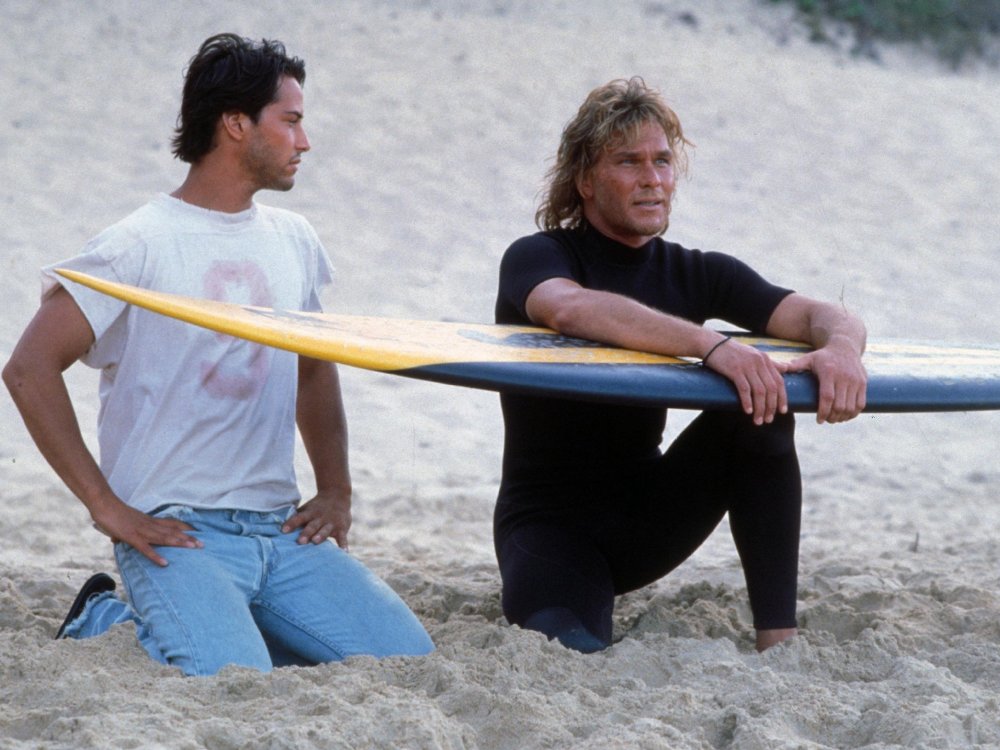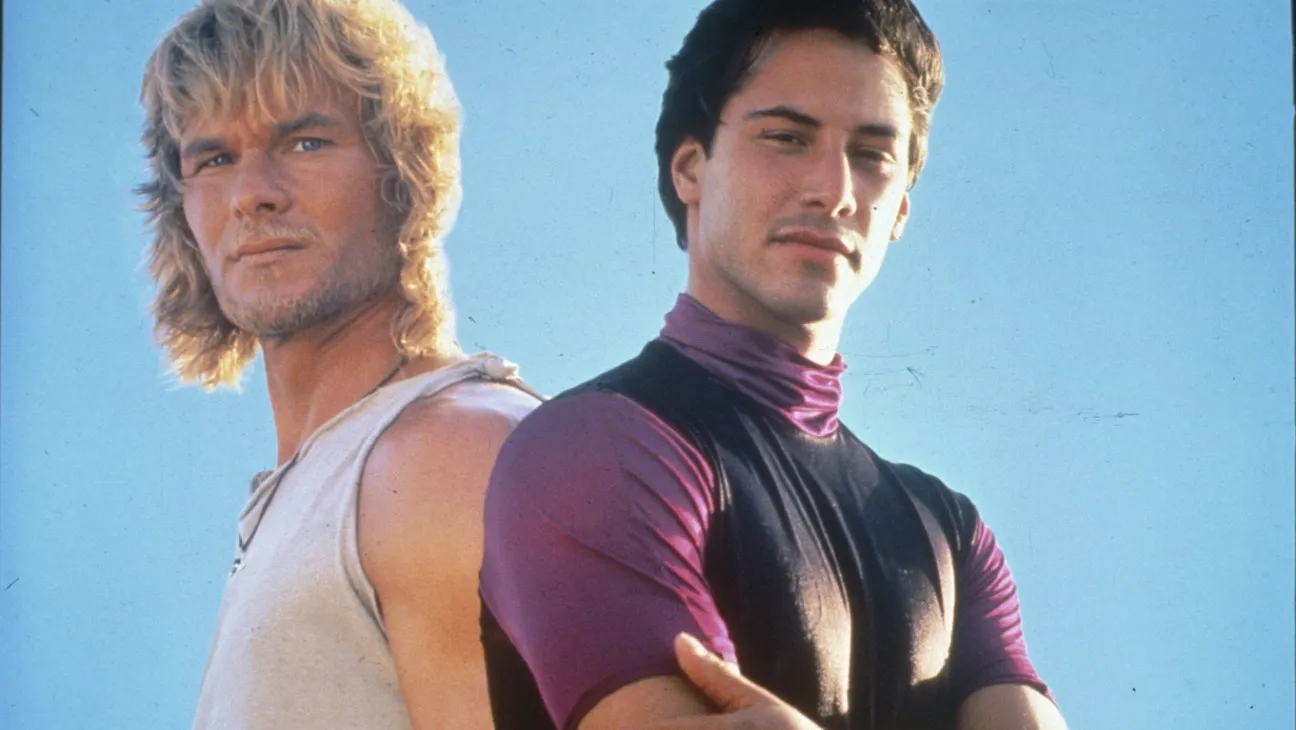It’s July 1991, and Point Break opens up in theaters. A 22-year-old walks into the theater and sits down. Reflecting on it now, my 55-year-old dad says he was drawn to it because it has everything that makes a movie great: a little romance, some movie stars, great action. But many movies have this, so I’m curious on what gave Point Break that extra staying power for him? As we headed to Metrograph for the North American premiere of the new 4K restoration, he believed that, at least for him, it had to do with his own experience seeing the film. Preparing to get married just a few months later, he was taking on a new level of responsibility. Having a bit of an adrenaline junkie phase himself, planning to start a family inevitably pushes certain activities away. No more riding dirt bikes and going off jumps at 25–30mph. After all, he didn’t want me following suit and getting injured. Through Point Break, he could vicariously live through the actions of Johnny Utah (Keanu Reeves) and Bodhi (Patrick Swayze). And if there were any movie to pick characters to live vicariously through in your early 20s, Kathryn Bigelow’s film sure seems like an excellent choice.
Having never seen the film before, I was immediately taken by how sun baked the entire thing looks and feels. Surfing in and of itself is a wild concept. Seeing it take up an entire movie screen only added fuel to that belief. The image of seeing people simply float on a board across the water looks as if it shouldn’t work. Yet the greatest surfers make it look not only dazzling, but effortless. It’s as if there’s an innate agreement between surfer and mother Earth that allows them to achieve such spectacular wizardry. With Point Break, Bigelow understands the cinematic nature of such a sport, and makes total use of the Los Angeles beach setting. Yet just because she beautifully captures the wondrous ability very skilled surfers have doesn’t mean she phones in anything else that takes place in the movie. In fact, one could argue that the surfing sequences are the least gripping of the film. Considering how well executed and marvelous they look, that’s really saying something. But one simply has to witness any of the major action sequences in the film to realize that Bigelow is one of our finest action directors.
Take, for example, the arguable standout sequence: a multiple minutes long foot chase across Los Angeles. Running through home interiors, backyards, alleyways, and more, it all culminates in the Los Angeles river. Bigelow captures it as if the camera is a fly who just so happens to intersect with the chase route. The action is so dynamic that the camera simulates a neck whipping back and forth to follow the two figures frantically running towards and away from one another. It’s just such a dynamic, boots-on-the-ground display of handheld filmmaking. At times it feels as if the camera operator is literally going to toss their camera over a fence the two are hopping to keep up. It’s immensely thrilling and highly engaging, and that’s before examining anything beyond the surface level.

In this scene, Johnny Utah is chasing down his bank robber target who has been running in a full suit and ex-president mask. Johnny has become ingrained within the group, so he has some ideas, but doesn’t know exactly which surfer/robber he’s chasing. But upon injuring himself, the two share one long, piercing, glance. And that’s enough. Bodhi’s crystal-clear eyes look down the barrel of both the camera and Johnny’s gun, and we understand exactly all that’s going on in the minds of both of these characters. Somewhere along the way, they found themselves far too caught up in the action. They’ve ventured to the very ends of their respective self in order to try and rid themselves of the motions the rest of society goes through. And while we may not be robbing banks or trying to surf 50-foot mega waves on a regular basis, there’s an inherent relatability, and fear, in losing ourselves to something larger than us.
Whether it be the movies themselves, extreme sports where we face nature head-on, or just these man made systems that make up society, Point Break is a film that’s fixated on the aesthetics of exteriority. Even still, it’s a deeply internal movie that operates on the conceit that sometimes we might have to completely lose ourselves in a storm in order to find our truest sense of self. In the final moments of the film, Bodhi begs to be allowed to venture into the vast unknown. He may end up getting lost to the vast power of a borderline mythical storm, but it’s perhaps the first time we see him wholly truthful to his own self-proclaimed values. And if that’s not enough of an interesting sell, the film also features Reeves jumping out of a plane sans parachute. Bigelow gives us a literal act of committing oneself to the lunacy that is life, and just believing, or hoping, we’ll safely land on the other side.
Point Break is currently playing at Metrograph as part of the Beach Bodied series. For more information on screenings, head here.
